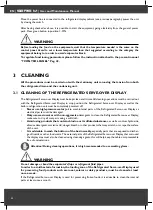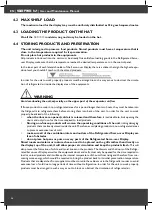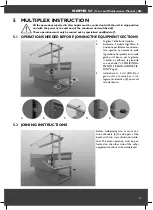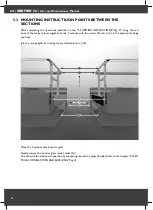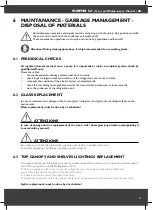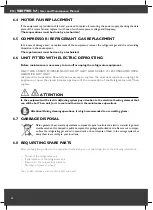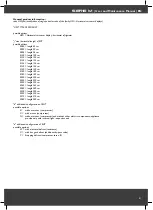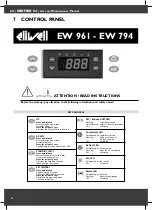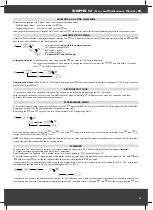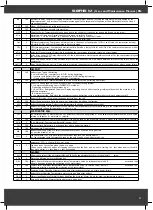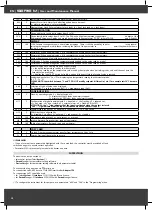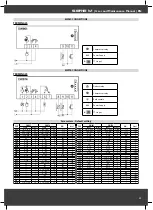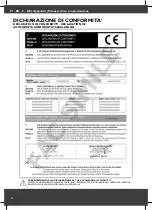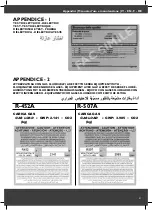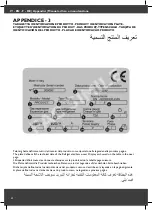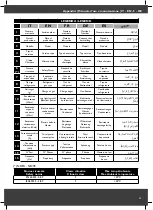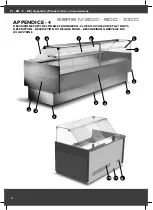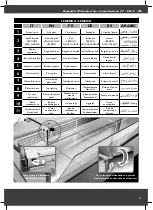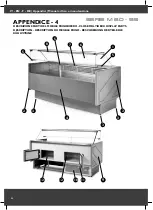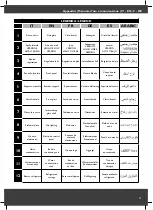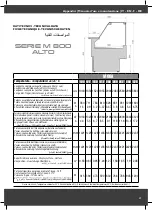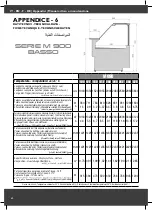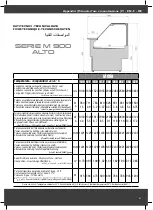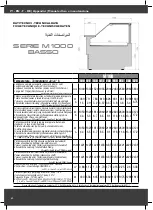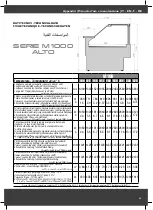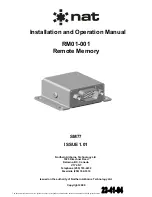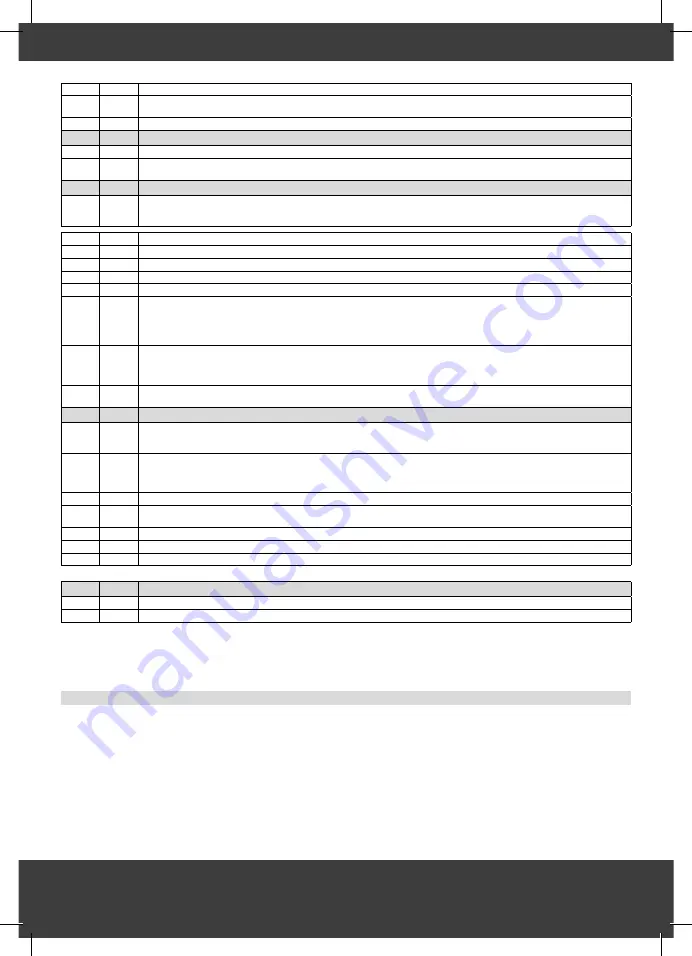
EN |
SERIE M
| User and Maintenance Manual
48
tAO
1&2 temperature Alarm Override. Temperature alarm signal delay time.
dAt
2
defrost Alarm time. Alarm for defrosting ended due to time out.
n = alarm deactivated; y = alarm activated.
EAL
2
External Alarm Clock. External alarm to lock loads (n = don’t lock loads; y = lock loads).
COMMUNICATION
dEA
2
Device address in family (valid values from 0 to 14).
FAA
2
Device family (valid values from 0 to 14). The FAA and dEA values represent the network
address of the
Refrigerated Serve-over Display and are indicated in the following format “FF.DD” (where FF=FAA
and DD=dEA).
DISPLAY
LOC
1&2 LOCk. Setpoint change shutdown. See related paragraph. There is still the possibility to enter
into parame-
ters programming and modify these, including the status of this parameter to
permit keyboard shutdown.
n = no; y = yes.
PS1
1&2
PAssword 1. When enabled (value ≠ 0) it constitutes the access key for level 1 parameters.
PS2
2
PAssword 2. When enabled (value ≠ 0) it constitutes the access key for level 2 parameters.
ndt
2
number display type. View with decimal point. y = yes; n = no.
CA1
1&2 CAlibration 1. Positive or negative temperature value added to the value read by probe 1.
CA2
1&2 CAlibration 2. Positive or negative temperature value added to the value read by probe 2.
ddL
1&2 defrost display Lock. Viewing mode during defrosting.
0 = shows the temperature read by the room probe;
1 = locks the reading on the temperature value read by room probe when defrosting starts, and until the next time the
Setpoint value is reached;
2 = displays the label “dEF” during defrosting, and until the next time the Setpoint value is reached.
dro
2
display read-out. Select °C or °F for displaying the temperature read by the thermostat probe.
(0 = °C, 1 = °F).
PLEASE NOTE: the switch between °C and °F DO NOT modify setpoint, differential, etc. (for example set=10°C become
10°F)
ddd
2
Selection of type of value to be displayed.
0 = Setpoint; 1 = cold room probe (Pb1); 2 = evaporator probe (Pb2).
CONFIGURATION
H08
2
Stand-by operating mode. 0 = display switch off;
1 = display switch off, loads and alarms stopped;
2 = display with OFF label, loads and alarms stopped.
H11
2
Configuration of digital inputs/polarity. 0 = disabled; ±1 = defrosting; ±2 = reduced set;
±3 = not used; ±4 = door switch; ±5 = external alarm; ±6 = Stand-by (ON-OFF).
ATTENTION!: the “+” sign indicates that the input is activated when the contact is closed.
the “-” sign indicates that the input is activated when the contact is open.
H25 (!)
2
Enable/Disable the buzzer. 0 = disabled; 4 = enabled; 1-2-3-5-6 = not used.
H32
2
DOWN button configurability.
0 = disabled; 1 = defrost; 2 = not used; 3 = reduced set; 4 = stand-by.
H42
1&2
Evaporator probe present. n = not present; y = present.
rEL
1&2
reLease firmware. Device version: read only parameter.
tAb
1&2 tAble of parameters. Reserved: read only parameter.
COPY CARD
UL
2
Up load. Programming parameter transfer from instrument to Copy Card.
Fr
2
Format. Erasing all data in the copy card.
(!) WARNING!
•
If one or more of these parameters highlighted with (!) are modified, the controller must be switched off and
switched on again to ensure correct operation.
• Parameter H25 is present only in model with buzzer on board.
SUPERVISION
The device can be connected to:
• telecontrol system Televis
System
(°)
•
Param
Manager fast parameter setting software
•
Device
Manager fast parameter setting software (only parameter table)
The connection can be made via
TTL
serial port.
For connection to RS-485 bus use TTL/RS485 interface Bus
Adapter 150
.
For connection to PC should be used:
• for Televis
System
: PC
Interface
1110/1120 with Televis licence;
• for
Param
Manager: PC
Interface
2150/2250 with
Param
Manager licence;
(°) To configure the instrument for this purpose, use parameters “dEA” and “FAA” in the “Programming” menu.

